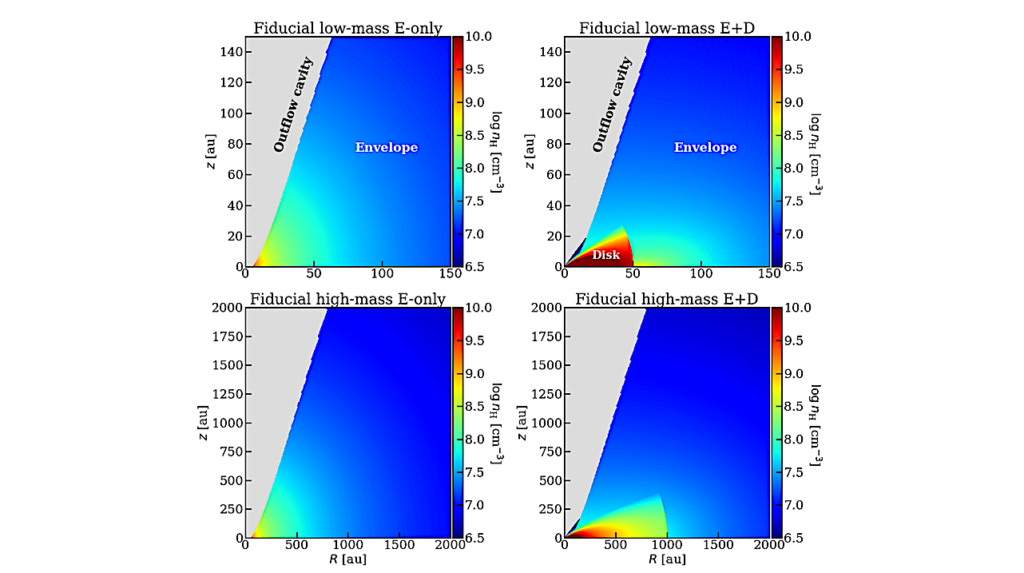Spectroscopic Measurements Of CH3OH In Layered And Mixed Interstellar Ice Analogues

Context. The molecular composition of interstellar ice mantles is defined by gas-grain processes in molecular clouds, with the main components being H2O, CO, and CO2. CH3OH ice is detected towards the denser regions, where large amounts of CO freeze out and get hydrogenated.
Heating from nearby protostars can further change the ice structure and composition. Despite the several observations of icy features towards molecular clouds and along the line of site of protostars, it is not yet clear if interstellar ices are mixed or if they have a layered structure.
Aims. We aim to examine the effect of mixed and layered ice growth in ice mantle analogues, with focus on the position and shape of methanol infrared bands, so future observations could shed light on the structure of interstellar ices in different environments.
Methods. Mixed and layered ice samples were deposited on a cold substrate kept at T = 10 K using a closed-cycle cryostat placed in a vacuum chamber. The spectroscopic features were analysed by FTIR spectroscopy. Different proportions of the most abundant four molecules in ice mantles, namely H2O, CO, CO2, and CH3OH, were investigated, with special attention on the analysis of the CH3OH bands.
Results. We measure changes in the position and shape of the CH and CO stretching bands of CH3OH depending on the mixed or layered nature of the ice sample. Spectroscopic features of methanol are also found to change due to heating. Conclusions. A layered ice structure best reproduces the CH3OH band position recently observed towards a pre-stellar core and in star-forming regions. Based on our experimental results, we conclude that observations of CH3OH ices can provide information about the structure of interstellar ices, and we expect JWST to put stringent constraints on the layered or mixed nature of ices in different interstellar environments.
B. Müller (1), B. M. Giuliano (1), M. Goto (2), P. Caselli (1) ((1) Max-Planck-Institut für extraterrestrische Physik, Garching, Germany, (2) Universitäts-Sternwarte München, München, Germany)
Comments: 11 pages, 8 figures, 3 tables
Subjects: Astrophysics of Galaxies (astro-ph.GA); Instrumentation and Methods for Astrophysics (astro-ph.IM)
Cite as: arXiv:2107.09381 [astro-ph.GA] (or arXiv:2107.09381v1 [astro-ph.GA] for this version)
Submission history
From: Birgitta Müller
[v1] Tue, 20 Jul 2021 09:57:45 UTC (2,378 KB)
https://arxiv.org/abs/2107.09381
Astrobiology, Astrochemistry,








